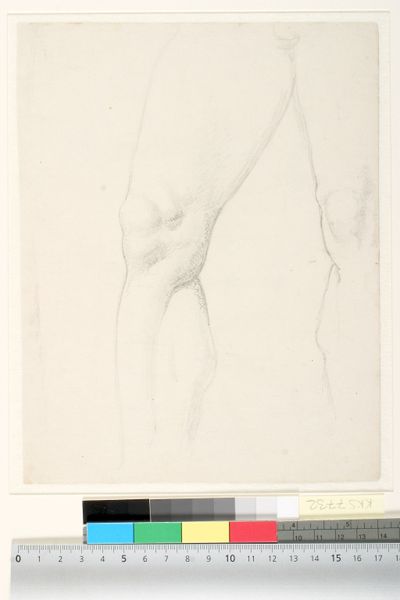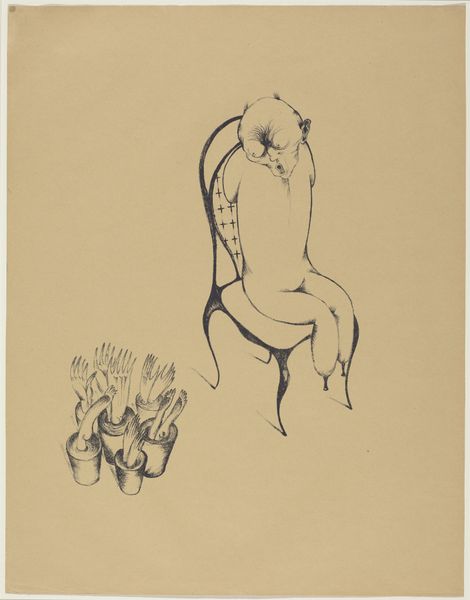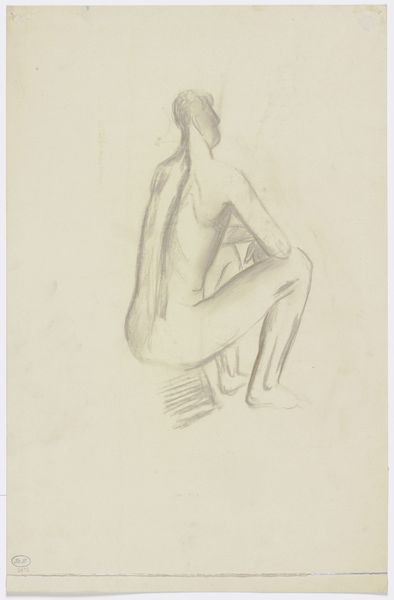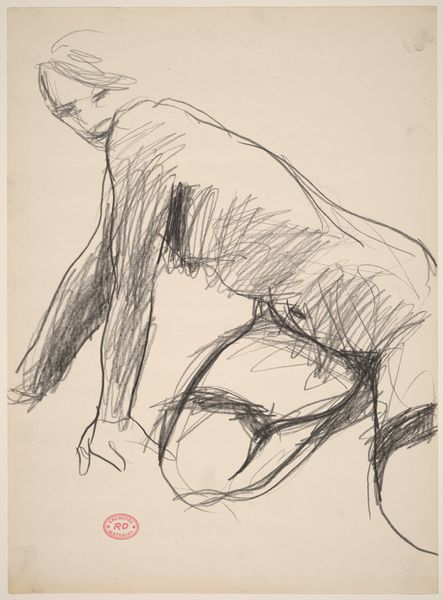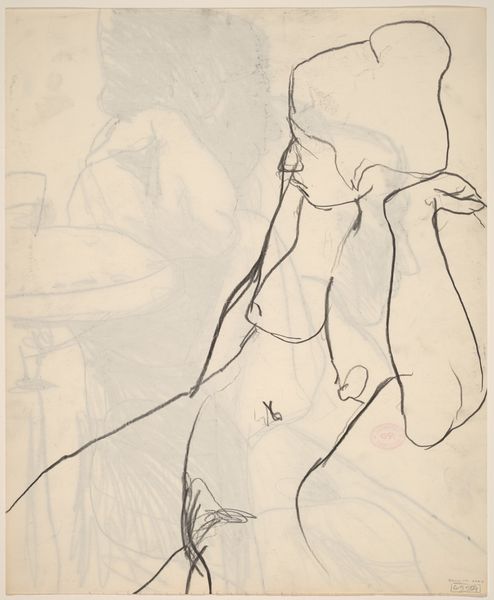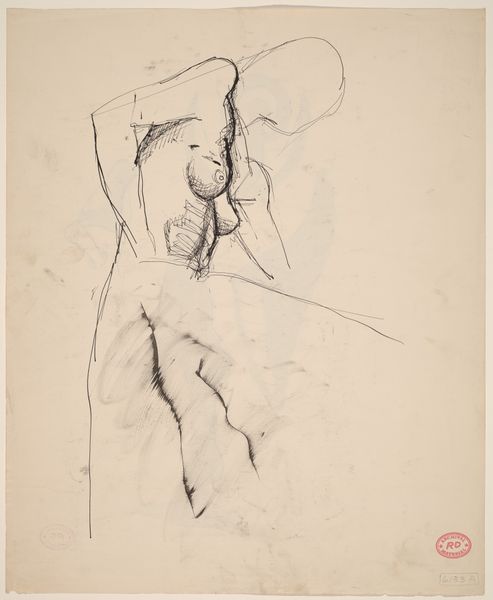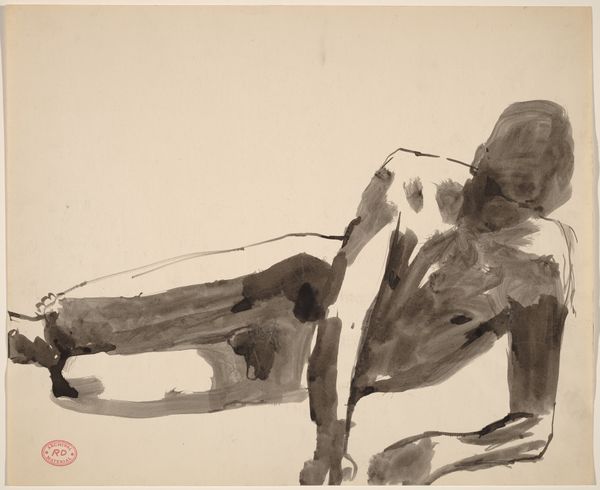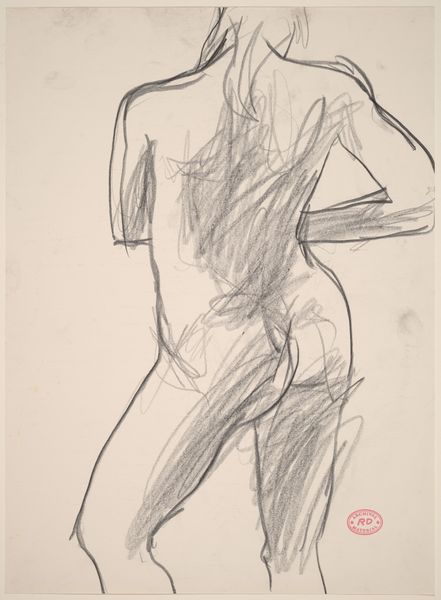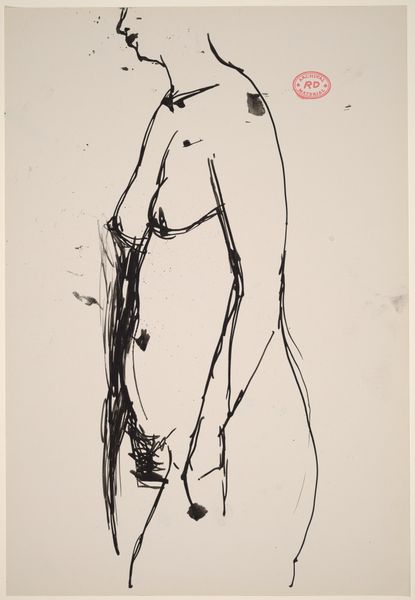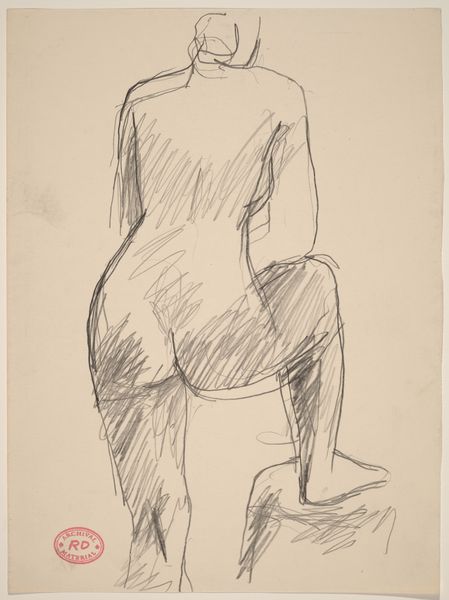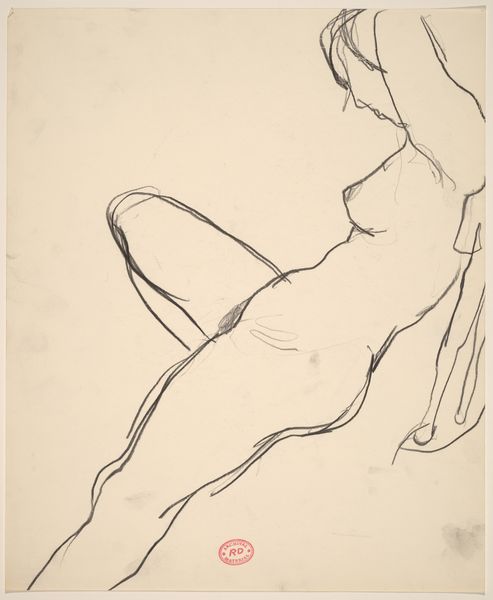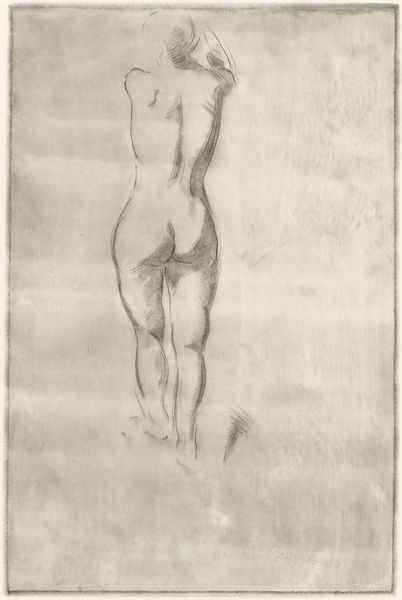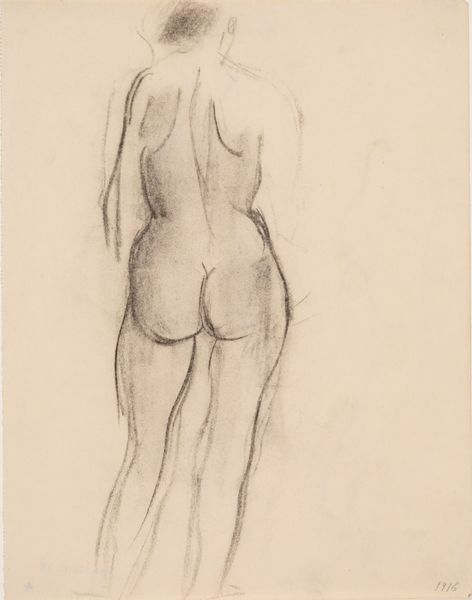
drawing, pencil
#
drawing
#
amateur sketch
#
toned paper
#
light pencil work
#
quirky sketch
#
dutch-golden-age
#
pencil sketch
#
incomplete sketchy
#
landscape
#
figuration
#
personal sketchbook
#
ink drawing experimentation
#
pencil
#
abstraction
#
sketchbook drawing
#
sketchbook art
Dimensions: height 163 mm, width 212 mm
Copyright: Rijks Museum: Open Domain
Curator: Leo Gestel's "Grazende koe," dating from 1891 to 1941 and held here at the Rijksmuseum, is a simple yet captivating pencil drawing. Editor: It’s immediately striking. The cow's rump is centered, dominating the composition. Stark. A little sad, perhaps? There’s a feeling of… isolation. Curator: Isolation's interesting. I see a creature caught in a moment of peaceful absorption, head down, unaware of being observed. I get lost in the light pencil work and subtle tonality of the paper. Editor: But who benefits from that peace? Pastoral scenes always make me think about labor, class, who owns the land and the cattle. Whose gaze are we invited to share here? Is it celebratory, or simply...possessive? Curator: The loose, almost incomplete sketching softens any harshness, I think. Gestel captures the essence of the animal with an economy of line. A quirky sketch! Maybe we are seeing something of the artist’s connection to nature? His personal musings? Editor: Possibly, but “nature” itself is never neutral. Representing grazing cattle romanticizes rural life but conveniently erases histories of agricultural exploitation, commodification and colonial power dynamics. Consider who benefits when a moment is frozen in an aesthetically pleasing pose. Curator: A pose caught during, maybe even celebrating, simple daily life, though! And it certainly prompts deeper thought. But now, as I ponder what we both glean from this "Grazende koe," I wonder about the dialogue art inspires! Editor: Exactly. We excavate beyond face value, prompting discourse, challenging ingrained assumptions about idyllic landscapes. It is the role of art to spark not just contemplation, but active questioning.
Comments
No comments
Be the first to comment and join the conversation on the ultimate creative platform.
